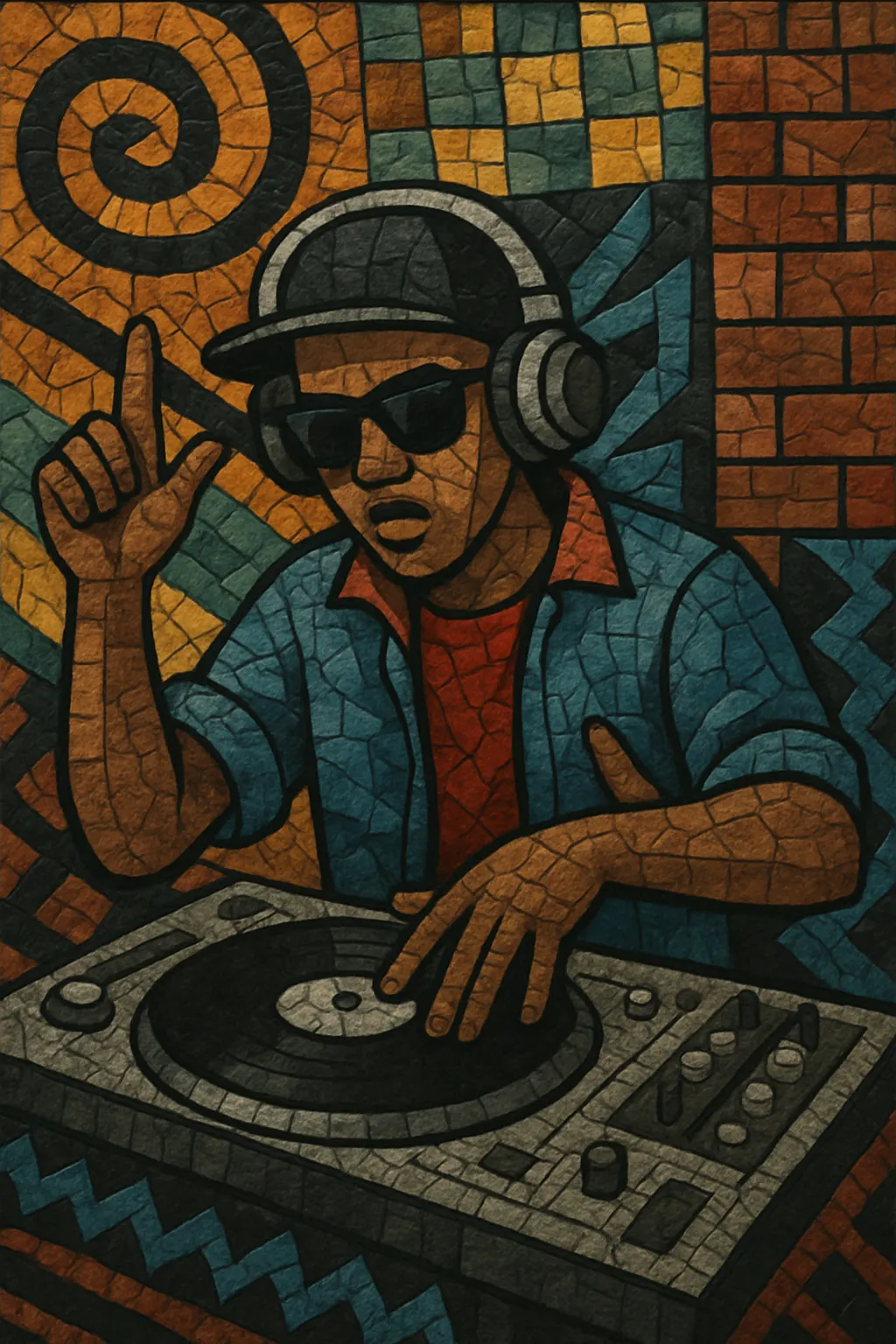
Hip house is a hybrid dance-rap style that fuses the four-on-the-floor pulse, piano/organ stabs, and drum-machine grooves of Chicago house with MC-driven hip hop verses. Typical tempos sit around 118–128 BPM, with 4/4 kicks on every beat, crisp off-beat hi-hats, claps on 2 and 4, and basslines that can be either chunky and syncopated or smooth and rolling. Vocals alternate between rapped verses and chant-like hooks or sung refrains, often using hype calls, crowd participation, and party-centric themes.
Emerging in the late 1980s, the sound quickly spread from Chicago to New York and then to the UK and Europe. Landmark records by Fast Eddie, Tyree Cooper, Todd Terry (as Royal House), and the Jungle Brothers crystallized the formula—house rhythms powered by 909/808 kits and M1 pianos, paired with hip hop flows. Hip house’s accessible, club-forward energy helped bridge rap and dance audiences and laid groundwork for later dance-rap and Eurodance crossovers.
Hip house emerged in the mid-to-late 1980s in Chicago’s house scene as DJs and producers began laying MC-led rap verses over house instrumentals. The city’s house foundations—four-on-the-floor beats, piano/organ stabs, TR-909/808 percussion, and warehouse party culture—provided the perfect bed for hip hop’s rhythmic spoken delivery. Early club experiments and mixtapes paved the way for studio singles that codified the style.
A few records firmly established the genre: The Beatmasters feat. Cookie Crew’s “Rok da House” (1987, UK) signaled the formula internationally. In the U.S., Fast Eddie released several scene-defining cuts such as “Yo Yo Get Funky” (1988), while Tyree Cooper’s “Turn Up the Bass” (1988) became a staple. Todd Terry, as Royal House, and as producer for the Jungle Brothers’ “I’ll House You” (1988), delivered the definitive house-meets-rap crossover. These tracks showcased house’s driving 4/4 with confident MC performances and hooky chant refrains.
The UK embraced hip house, feeding it into chart pop and the burgeoning rave continuum. Doug Lazy’s singles and Mr. Lee’s releases garnered club and radio play, while Rebel MC & Double Trouble’s “Street Tuff” (1989) bridged sound system energy with house rhythms. Belgium’s Technotronic infused hip house DNA into global hits like “Pump Up the Jam” (1989), pairing rap verses with house grooves and catchy melodies, and helping normalize dance-rap hybrids on pop charts.
By the early 1990s, hip house’s core ideas—MCs over uptempo four-on-the-floor—diffused into Eurodance, pop-rap, and UK rave/breakbeat scenes. While the genre’s chart presence waned as styles diversified, its template informed later fusions, from g-house’s rap acapellas over modern house to mainstream dance-pop collabs between rappers and club producers. Today, hip house remains a touchstone for producers seeking party-forward, vocal-driven house with hip hop swagger.

